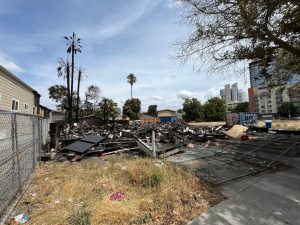Rock climbers who have expressed concern over proposed changes to federal regulations affecting climbing safety equipment in wilderness areas got some powerful allies this week when more than a dozen U.S. senators took their side.
Related Articles
Climbing legend Chris Sharma returns to competition — at a Hackensack gym
A letter signed by 14 senators argued that a plan put forward by the National Park Service and the U.S. Forest Service would severely limit the use of fixed anchors for climbing, raising safety concerns. The letter was sent to Interior Secretary Deb Haaland, whose department administers the park service, and Agriculture Secretary Thomas Vilsack, whose department manages the forest service.
“(The) proposed draft guidance on the use and maintenance of fixed anchors in wilderness areas (makes) significant policy changes that would restrict climbing safety practices,” the letter states. “Finalizing these proposed changes jeopardizes access to our public lands and puts the climbing community at risk.”
The proposed guidance would change the way fixed anchors have been viewed since the Wilderness Act of 1964, treating them for the first time as “installations,” which are prohibited in wilderness areas unless specifically approved. Fixed anchors are typically steel hardware that are permanently embedded into rock faces; climbers can attach ropes to the anchors to help ensure their safety in case of a fall.
“We are hearing that this new determination could threaten over a century of precedent, hinder the establishment of new climbing routes, and complicate maintenance of fixed anchors,” this week’s letter from the senators stated. “This means access to some of America’s most iconic climbing routes such as The Dawn Wall on El Capitan in Yosemite National Park, big walls in Utah’s Zion National Park, adventures in the Wind River Range of Wyoming, many historic climbs in Washington’s North Cascades, and climbing opportunities in Arkansas’ Ozark-St. Francis National Forest could be limited.”
“We believe that fixed anchors should not be considered installations in wilderness,” the letter stated, “and urge the agencies to protect these fundamental safety tools.”
Signing the letter were both senators from Washington, Idaho, Nevada, Colorado and Wyoming and one each from Alaska, Utah, Arkansas and West Virginia.
Byron Harvison, policy director for the American Alpine Club, welcomed the support from Capitol Hill.
“We would like to see the preservation of the right to utilize fixed anchors in wilderness areas, provided they still protect wilderness character,” Harvison said. “We wholeheartedly support the Wilderness Act of 1964 and we support the historic use of fixed anchors. We support the regulation of fixed anchors in wilderness areas, just not the proposed definition that would categorically prohibit them by labeling them as installations.”
Cynthia Hernandez, a spokeswoman for the National Park Service, stated in an email that the proposed change does not ban fix anchors. In the arcane jargon of government agencies, the “draft guidance” deeming them installations makes them subject to a “minimum requirements analysis” (MRA) process that evaluates potential impacts before issuing approval.
Related Articles
Historic rainfall inflicts chaotic floods across 4 continents
East Bay-made wine has a new appellation — here’s what to know
‘Unprecedented’: 2 more locally acquired dengue cases in Southern California
Wildfire risk upends California’s marijuana heartland as insurance vanishes
Retrofitted Cal Fire air tanker already part of state’s wildfire efforts
“Climbers could still use existing fixed anchors and even make emergency replacement fixed anchors if needed for safety purposes until the NPS completes an MRA that evaluates the relevant climbing route and equipment,” Hernandez continued. “This draft guidance, once implemented, will provide visitors and park managers with a consistent and clear process regarding the placement and/or replacement of permanent bolts or other fixed climbing equipment in NPS wilderness.”
Harvison noted that climbers helped write the Wilderness Act and have historically been staunch supporters of wilderness protection. The climbing community has mobilized in opposition to the proposed new guidelines.
“We were all caught by a surprise, all of a sudden, this fairly dramatic departure and acceptance of this definition of what an installation is,” Harvison said. “Now we’re in protection mode, trying to maintain what we believe is our right under the Wilderness Act to continue to use these fixed anchors.”












